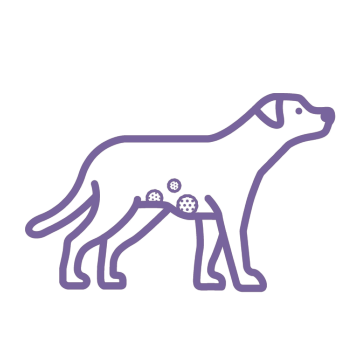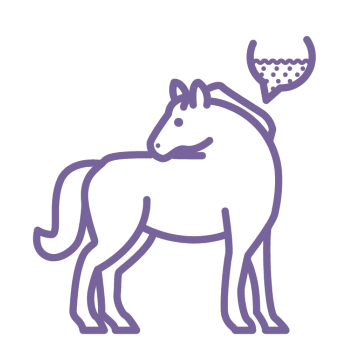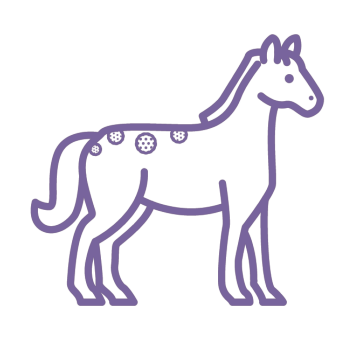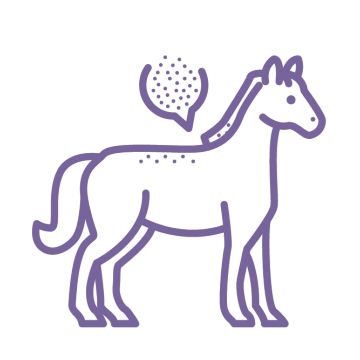- Shop
Collections
Categories
Skin Conditions
- Skin Conditions
- Apparel & Accessories
- Meet the Founder
- Shop
Collections
Categories
Skin Conditions
- Skin Conditions
- Apparel & Accessories
- Meet the Founder
Stay vigilant when it comes to equine skin care. Skin issues can significantly impact your horse’s well-being and comfort. Conditions such as scratches/dermatitis, rain rot, and fungus can cause discomfort, itching, hair loss, and even painful sores. Early detection and treatment of these horse skin issues are crucial in preventing escalation and long-term damage to your horse’s skin and overall health. Regular grooming, proper nutrition, and maintaining a clean environment are essential for horse coat care and can help prevent many common equine skin infections.
The Quick Guide to Skin Conditions includes helpful tips for identifying skin conditions in horses and dogs, along with the recommended care regimen and product suggestions.

Canine ringworm causes hairless, crusty patches on dogs that can quickly spread. Early detection can be tough as affected areas may not itch.

No matter the cause, proper wound care in horses involves keeping wounds clean and free of dirt and debris.

Sweet itch in horses is a severe allergy to biting insects' saliva, causing itchiness, hives, scabbing, and hair loss.

Equine Scratches, or Pastern Dermatitis, causes scabby, red, and tender skin in the pastern hollow due to bacteria or the same organism as rain rot.

Equine ringworm causes hairless, crusty patches that may not itch, making it difficult to detect early. Watch for changes in your horse's skin.

Rain rot is a bacterial skin disease in horses, thriving in warm, moist conditions. Watch for matted coats, tight scabs, and inflamed spots.

Midges/fly exposure causes neck threadworms, itching around the mane, tail, chest and belly, and misdiagnosis as Sweet Itch, leading to blindness.

Itchy equine manes and tails are common issues for horse owners, caused by allergies, parasites, or skin conditions like sweet itch or rain rot.

Sallenders and Mallenders cause thickened, scabby skin in the leg creases of feathered breeds like Gypsy Vanners, Clydesdales, and Friesians.

Horses can experience hair loss and dandruff from environmental factors, low-fat diets, or serious conditions like ringworm and skin fungus.

Cannon Crud arises from excess keratin in horses on the face, ears, above hocks and cannon bone, leading to dry skin and waxy buildup.

This is for all of you who may be daunted by the task of sheath cleaning. Please download our free PDF tutorial below. Maybe keeping it around the barn will help others who feel turned off by the job of sheath cleaning.